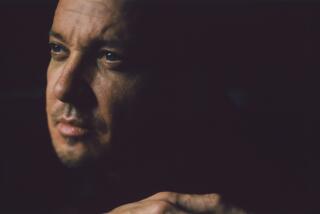DANCE REVIEW : An Immersion in Persian Culture : Avaz International Troupe Ignores Normal Boundaries and Creates a True Adventure
Anyone interested in a travel bargain should immediately book passage for next year’s performance of Persian dance and music by Avaz International Dance Theatre.
For Avaz, which gave its annual Persian concert Sunday at the Irvine Barclay Theatre, ignoring the usual folk-dance concert perimeters has created a true cultural adventure.
A primary asset of the Pasadena-based, 20-member troupe is its artistic director, Anthony Shay. Scholar, musician, choreographer and linguist, Shay not only knowledgeably introduced each number in English and Farsi, he in termittently participated as a vocalist, singing a variety of Iranian songs with an ease and affection that obviously were appreciated by the substantially Iranian audience.
Beyond Shay’s skills and ingratiating informality, the program itself had an extraordinary historical, cultural and geographical breadth.
The evening’s dances ranged, for instance, from “Mojassameh,” based on an Iranian children’s game, to “Tajikistan,” a suite of dances from Iran’s Chinese frontier.
*
Accompanied by seven musicians who performed in varying combinations, the dances were characterized by layered costuming--a tunic over a skirt over gathered leggings--and movements that were surprisingly gentle with footwork more gliding than sharply rhythmic.
One interesting aspect of many of the older Persian dances was that while the dancers’ bodies held with an almost asexual rigidity, their arms and hands suggestively simulated bodily undulations.
Only a few of the works paired men and women. This was, perhaps, dictated by the cultures involved, but it may also reflect the fact that the women of the Avaz ensemble seemed the stronger performers.
The lack of sexual parity did, however, have benefits in allowing the performance to be dominated by women’s rituals and concerns. This orientation was particularly well-delineated by the performance piece “Iran,” with its glimpse into a private, female gathering.
Using folk material compiled by Shay and wonderfully danced and verbalized (in Farsi) by Carolyn Krueger and Debra Niazi, “Iran” illustrated the hidden but supportive and sometimes joyously uninhibited subcultures that can evolve in sequestered societies.
More to Read
The biggest entertainment stories
Get our big stories about Hollywood, film, television, music, arts, culture and more right in your inbox as soon as they publish.
You may occasionally receive promotional content from the Los Angeles Times.






